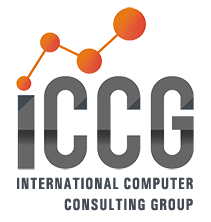The evolution of supply chain business models has been accelerated by unprecedented disruptions. As a result, there has been a clear shift from analog supply chains models of the past into a trajectory towards a digitalized ecosystem. These new business models recognize and necessitate the move to a digital and integrated supply chain that provides visibility and ease of use for consumers.
This journey is about moving towards a world where all parties participating across your network are connected to a single version of the truth. Supply chain thinking is shifting from ‘linear supply chains’ to ‘supply chain eco-systems’ propelled and supported by digital technologies.
Gartner has established a five-stage model of the journey to supply chain maturity, ranging from manual, analog systems to a fully digitalized ecosystem. Key differentiators along this evolutionary chain include consideration of data and collaboration, with the ultimate goal of integrating data across multiple systems to achieve a fully connected ecosystem that provides transparency and visibility for your company both internally and externally.
Read More
Topics: Manufacturing, Distribution, Supply Chain, Supply Chain Network, CloudSuite, Enterprise Software, Supply Chain Operations, Supply Chain Management
Even when your warehouse operations appear to be running smoothly, change and disruption are constant battles that supply chains must fight. Black swan events, emerging technology, new regulations, and shifts in consumer demand have created an increased need for “always up-to-date” functionality. While steps can be taken to mitigate risk, when changes occur it’s still up to you and your team to adjust and ensure new warehouse capabilities are implemented quickly.
If your organization previously reviewed, dismissed, or put off moving your WMS to the cloud, it’s time to reevaluate. Decisions that seemed to make sense last year or even last quarter, likely look very different through today’s lens. With business models drastically changing and uncertainty lingering in every corner, what if you could offload critical IT responsibility to an organization you trust to manage it all for you?
Read More
Topics: ERP, Supply Chain, Warehouse Management Systems, Product Lifecycle Management, Infor M3 ERP, Enterprise Software, WMS, Supply Chain Management
The urgency of data security and privacy can’t be overstated. In 2021, the global average cost of a data breach was $4.24 million, representing a 9.8% increase over 2020. Yet the immediate costs are a trifle when compared to the incalculable, lasting brand, reputation, and business damage that a data security incident causes.
Understanding the present threat
Risks associated with information security threats increase minute by minute. Bad actors with malicious intent are continuously evolving their strategies and attempting increasingly creative and sophisticated security breaches. The constant potential threat of cyberattacks and security breaches can be taxing on IT teams and organizations that need vigilance, resources, talent, and educational resources just to stay ahead.
The number of potential attackers is also expanding to include not only independent attackers and small groups, but also state-sponsored hacking organizations that are much better organized and funded. These larger groups can afford to devote multiple resources to breaching the defenses of small and large organizations over a long period of time—a level of commitment attackers once reserved only for the most strategic targets.
Read More
Topics: Manufacturing, Distribution, Supply Chain, Warehouse Management Systems, Enterprise Software, Security & Compliance, WMS, Supply Chain Management
The fashion industry thrives on innovation. It’s what the consumer wants from us—something new, not just clones or replacements for worn-out items. New product introductions are critical to business success, but only half of them achieve the profit objectives set before launch. To improve the ratio of hits to disappointments, it is essential to listen to the consumer and collaborate with the supply chain.
The consumer sets the bar for value and the supply chain determines whether you meet or miss it. The next decade will call for significant materials and process innovations at both the micro (product) and the macro (enterprise, supply chain, and industry) level. If shorter, more frequent product introduction cycles were the only challenge… but they’re not. At strategic planning levels, the industry must figure out how to convert to more sustainable ways of doing business, starting with raw materials and research and development and expanding product lifecycle management practices to include recycling. At the operational level, rethink the way you work internally and collaborate with supply chain partners to eliminate waste throughout the value chain. If a process doesn’t add value for the consumer, don’t do it. Optimize the entire value chain and focus it on value creation. Innovations arise at every stage, when all the partners can see the value chain as a whole.
Read More
Topics: Fashion & Retail, Distribution, Supply Chain, Fashion & Apparel, Cloudsuite Fashion & Apparel, Infor CloudSuite PLM for Fashion, Enterprise Software, Supply Chain Management
In a data-driven world, navigating the challenges of today’s supply chains requires an unprecedented level of agility. This calls for supply chain tools that deliver network-wide trading partner connectivity to enable real-time visibility, demand and supply planning, and production scheduling insights.
Fortunately, modern tools deployed in an organization’s technology stack can digitally transform the supply chain, revealing new opportunities for innovation across the entire network.
At the same time, automation and advanced analytics delivered in a digital environment can synchronize production and distribution activities to match demand.
Read More
Topics: Manufacturing, Distribution, Supply Chain, Warehouse Management Systems, Enterprise Software, WMS, Supply Chain Management
1. Are we organizationally ready for significant change?
Organizations are only as good as their people, and manufacturers must look carefully at whether they have the right people and culture to support a different way of doing things. It is the people who will be responsible for implementing change, and they should be ready, committed, and on board with any type of transformation plan.
An organization’s culture can make or break a digital transformation project and “organizational change management” is one of the key components of such a project. Organizations should aim for an inclusive culture where people feel like they are key contributors to the company’s future success.
To achieve this, management teams should encourage a culture of openness to help employees step forward with their ideas. All change, and all transformation, starts with an idea – so it’s important for people to feel empowered to put their ideas out in the open.
Read More
Topics: Digital Transformation, ERP, Manufacturing, Distribution, Rentals & Equipment, Supply Chain, Fashion & Apparel, Industrial Manufacturing, Digital Manufacturing, Infor M3 ERP, Enterprise Software, Retail Supply Chain, WMS, Supply Chain Management
Many consumers are passionate about the quality of their food, the health implications, and the environmental footprint made by food manufacturers. To meet their shifting expectations, food and beverage manufacturers must speed product introductions and develop new offerings that reflect the changing views on what is fresh, healthy, and mindful—and technology can help. It’s not just taste, freshness, and convenience that drive food purchases today. Conscientious consumers also focus on health, wellness, and social issues as they shop for family meals. They take nutrition labels, visibility into suppliers, humane treatment of animals, and environmental sustainability into consideration when shopping for food. While these expectations put added pressure on food and beverage manufacturers, companies that turn to technology to help, should seize the opportunity. Meeting the demands of today’s socially aware consumers can be a valuable differentiator.
Read More
Topics: ERP, Food & Beverage, Supply Chain, Food Technology, CloudSuite Food & Beverage, Infor M3 ERP, Enterprise Software, WMS, Supply Chain Management
The future of planning is connected, intelligent, and continuous. Yet many companies remain so far away from this vision, it often seems unachievable. With many planning processes being so siloed and disconnected from execution, they can feel ineffective.
Fortunately, evaluations of the planning landscape reveal many organizations are adopting technologies that move towards a de-siloed, network-based approach to planning. For these companies, the primary goal centers around connecting planning capabilities to “a single version of the truth.” To optimize planning capabilities, it crucial to achieve this connection at the enterprise level as well as into the broader supply network.
But to do this involves using integrated business planning (IBP) or sales and operations planning (S&OP) to collaborate and analyze, perform demand planning to improve forecasting, optimize supply planning, and facilitate synchronization. Each of these areas are critical to a successful planning process and are more powerful when integrated and connected across a network.
Read More
Topics: Manufacturing, Distribution, Supply Chain, Warehouse Management Systems, Enterprise Software, WMS, Supply Chain Management
With spring just around the corner and rising hope that the vaccination rollout will eventually bring some relief to restrictions, it is time to start thinking about how the world of work should move forward. While the pandemic forced us to adopt new ways of working, we have learned some valuable lessons in the last year that should not be quickly forgotten. In fact, some of these new strategies should continue long after the crisis subsides as we have come to the realization that the workforce, the workplace and work itself will never be the same. Here are three concepts to consider as you plan for the future.
Read More
Topics: ERP, Manufacturing, Supply Chain, Supply Chain Network, Infor M3 ERP, Enterprise Software, Retail Supply Chain, Supply Chain Operations, WMS, Supply Chain Management
For years, food and beverage manufacturers have been concerned with short shelf life, inventory planning, and margin pressures. In today's competitive landscape, yesterday’s supply chains have had to adapt and change to respond to today’s consumer expectations of healthier choices, greater ingredient transparency, and the more options for online or e-commerce shopping.
This health and wellness trend isn't new. What’s new is the level of growth we’re seeing in the market for consumers that want a healthier lifestyle—and are in fact, demanding it from their food habits and purchases. Food and beverage manufacturers are doing their best to meet this trend with cleaner labels, more plant-based options, and more ethically sourced food. Both new product introductions and long-standing products in the market are being updated with healthier ingredients to replace preservatives, saturated fat, sugar, sodium, or genetically modified (GMO) ingredients.
Read More
Topics: ERP, Food & Beverage, Supply Chain, Food Technology, CloudSuite Food & Beverage, Infor M3 ERP, Enterprise Software, WMS, Supply Chain Management











